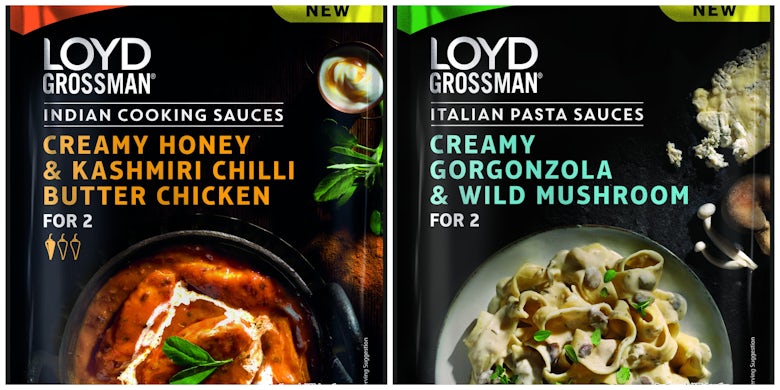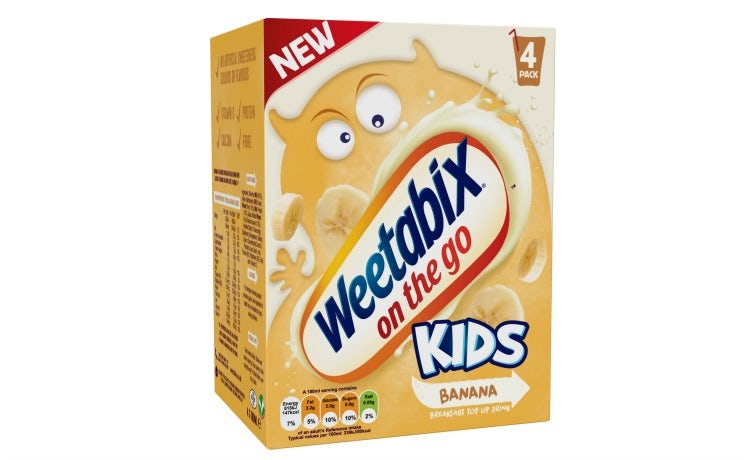‘Innovate or die’ is a phrase often used to describe the approach brands must take to stay ahead in an ultra-competitive market characterised by rapidly changing consumer demand.
However, the way companies go about driving new product development depends very much on their structure, priorities and where marketing sits within the innovation journey.
Marketing’s influence is key to ensuring new offerings fit with a strategy determined by customers’ needs, so companies aren’t stuck trying to sell something for which there is no demand. But brands have to balance being insight-driven with being able to launch products that no focus group would ever think to suggest.
Brands are taking new approaches to this problem all the time, as PepsiCo recently showed with its efforts to develop an ecommerce-only healthy squash brand Drinkfinity, which launched in March. The Drinkfinity team was set up to mirror the way a startup operates, all the way from innovation to execution. The team worked entirely independently from the rest of PepsiCo, using a separate office and working with different manufacturers.
While some brands are choosing similar radical options, such as setting up independent hubs or working with accelerator programmes, others opt for a cross-functional approach with marketing very much at the heart.
Innovation is not one more thing that marketers need to do, innovation is the way that a marketer needs to think and behave.
Antonio Lucio, HP
At taxi haling app Mytaxi, product and brand marketers inject the Mytaxi purpose into any form of innovation, according to CMO Gary Bramall. “If innovation is in a hub or a business unit, people will then start to think ‘their role is to innovate and my role isn’t’ and that is hugely distracting and doesn’t support innovation,” he says.
“We believe at Mytaxi that innovation needs to live in every part of the organisation, but the way in which we make innovation come to life is by creating cross-functional teams that will look to accelerate innovation.”
These cross-functional teams are typically united on how to innovate around a certain product, service, feature or function and are set clear KPIs on how quickly that innovation will go into ‘business as usual’. If the particular feature or service does not meet those KPIs, the business has to be as strong in killing that innovation as it was giving birth to it, explains Bramall.
“Otherwise we end up creating a whole portfolio of little things that are important to some people, but essentially don’t move the needle in our business. We can get very slow very quickly if we’ve got lots of these little innovations that just pop up as then marketing has to support them, the product team has to maintain them and operations has got to grow them,” he states.
“Basically innovations need to punch through and earn their right and if they don’t earn their right we’ve got to be comfortable and confident as a team to be able to kill it.”
Innovation is marketing’s responsibility
Innovation is central to marketing’s role within any organisation, according to HP global chief marketing and communications director, Antonio Lucio.
But he recognises the approach differs depending on the category. So while in FMCG the fundamental premise is that the ‘customer is king’, in a technology business like HP the goal is to create products consumers have never even dreamed about. This means marketing is responsible for bringing invention to life from a consumer experience standpoint.
Strategically, HP divides its business into three segments. There is the core business, which needs “sprinkles of innovation magic”; growth businesses, like its graphic printing arm, that will drive demand in the next three to five years; and the future business, including HP’s 3D commercial printing operation, which is aimed at creating revenue for the next five to 10 years.
If innovation is in a hub or a business unit people will then start to think ‘their role is to innovate and my role isn’t’ and I think that’s hugely distracting.
Gary Bramall, Mytaxi
In the core business everyone is expected to deliver innovation whether they’re working on product, sales or marketing, whereas the disruptive, future-growth 3D printing business unit was separated out because it needed specific nurturing.
“It needed room to roam before going out into the world, so we created a specific business unit driven by one of our most senior leaders, reporting directly to the CEO. The head of marketing of that group reports directly to me to ensure that we are driving the right level of innovation,” Lucio explains.
Wherever it sits, he believes innovation is marketing’s responsibility. “Innovation is not one more thing that marketers need to do, innovation is the way that a marketer needs to think and behave. Until we actually acknowledge that, we’re going to continue to keep innovation separate from our areas of responsibility, assigning it to a different group of people [without making] the cultural changes required to thrive.”
At Premier Foods, marketing, innovation, insight and R&D all report into the UK marketing director. This role was recently taken up by Yilmaz Erceyes, who joined the company in 2015 as brand director for the cooking sauces and desserts category, following 13 years at Procter & Gamble.

He believes the big advantage of having all the functions reporting into the marketing director is that everyone shares the same vision.
“Does that help drive agility and product innovation? Absolutely. We’ve made enormous progress on our innovation success rate and the amount of innovation we’ve been bringing to the market has grown exponentially if you look at the numbers from four years ago,” he states.
These integrated teams are headed up by brand directors who have responsibility for the three-year strategy of a brand or group of brands, as well as profit and loss ownership. Teams working on the same category are clustered together, attending the same meetings and sharing the same customer data.
It required a lot of grit and a bold approach in deciding to bring everything in-house and replace the old agency model from an ecommerce point of view.
Stephan Croix, Pizza Hut
It is this closeness that enables them to react rapidly to emerging consumer trends, he says. This was the case when Premier Foods decided to move its Bachelor’s Super Noodle brand into the pot snack category, an innovation that went from idea to store in 120 days and sold more than 10 million units in a single year.
Erceyes believes this “laser focus” on serving the UK consumer is delivering concrete results. “On average in grocery, less than half of the innovations that are launched are still on the retailer’s shelf in year two,” he explains.
“But for us the statistic is around 70%, so you see a clear difference and I put it down to our brilliant people and unique structure. When we develop an innovation its success rate is significantly higher than the average success rate in the UK grocers.”
An innovation pipeline
While the core category teams own the whole innovation agenda, Premier Foods also has a small group of highly specialised individuals responsible for breakthrough technology. This team developed Angel Delight’s ready-to-eat pots of mousse, an innovation which has helped it become one of Premier Food’s fastest growing brands, up 30% year-on-year.
“We don’t integrate them purposefully onto the category teams because we want them to have that broader view and not be tied down with the daily challenges of the business,” explains Erceyes.
“They report into our R&D director, who reports into me and I have conversations with them and see what breakthroughs we can develop. We think our current set-up delivers the results and one of the things that gives us that edge is our structure.”
The way Premier Foods manages innovation is attractive to its retail partners. Back in 2015 Tesco collaborated with the Premier Foods’ marketing innovation team to create a range of Loyd Grossman sauces in pouch format, going from concept to store in under four months.
Fostering an innovation-focused relationship with retailers is also crucial for Weetabix, which has used its masterbrand to add credibility to new product developments.
“Retailers want reassurance that new trends will be worth the space on-shelf and when big brands launch trend-driven innovation they can be assured that they add support, awareness and credibility,” says Francesca Davies, marketing director of Weetabix UK and Ireland.

The innovation, marketing, customer and category teams have all worked closely on recent product launches such as Weetabix Additions, one of the top 10 most successful FMCG launches of 2017 according to Kantar Worldpanel data, or the Weetabix On The Go Kids drinks concept, unveiled in April.
The innovation team are focused on building a five-year pipeline based on rich consumer insights. “They do this with invaluable input from our commercial, category and brand teams and we always take a cross-functional approach to our innovation to ensure it works for our consumers, our retailers and our business,” Davies explains.
Innovation teams lead the process from insight and idea generation, through to business proposal sign off. At this point the brand teams take ownership of the product, managing the launch across packaging, communication strategies and in-store execution.
While having integrated teams is a hallmark of Weetabix’s approach, Davies also recognises that innovation teams should be granted a degree of freedom.
“Innovation teams need to have some autonomy from the rest of the business and some separation from the day-to-day running, to give them the space to focus on the bigger opportunities for category and company growth,” she says.
“But as they progress from idea generation through to product development, commercialisation and execution, this process needs to be crucially integrated with commercial, supply chain, brand and operation teams to ensure we take our brilliant ideas through to a credible and commercial launch plan that will drive sustained success.”
The startup model
Pizza Hut has extended the freedom afforded to innovation teams much further. A year and a half ago, the company decided to reinvent its online customer experience by bringing previously outsourced digital and ecommerce skills in-house with the establishment of an innovation hub known as PHDV (Pizza Hut Digital Ventures).
Pizza Hut hired a team of 25 digital experts with skills from coding and server architecture to user experience, design and product management. The PHDV team were initially set up in a different location from Pizza Hut’s headquarters in St Albans and given an independent remit to optimise the digital experience.
Stephan Croix, chief sales and brand officer at Pizza Hut Europe and UK, says: “We felt we had to bring in the subject matter experts and give them enough room to manage and create that innovation. Then over time we integrated them as part of Pizza Hut to make sure we infused those ways of working across the board,” Croix explains.
“They were not completely isolated because there was a governance structure attached to it. We would check in on a regular basis and monitor their process, but in the beginning in particular they didn’t have to synchronise with every department of the business and that really allowed us to innovate at the speed of light.”
Success for the PHDV team is not assessed weekly or monthly, but hourly and daily. Croix insists that when you give a team this level of freedom it is crucial to provide them with a clear brief, which is why they are given the single KPI of improving conversion online.
Since the introduction of PHDV, Pizza Hut has experienced zero down-time on its website and load speeds have dropped to 1.7 seconds. The brand’s app has gone from a rating of one and half stars to five out of five. The team has also reduced the number of steps involved in ordering a pizza and introduced a ‘deal bot’ function that hunts for the best deal for customers buying multiple pizzas and sides. Perhaps most crucially, Pizza Hut’s conversion rate has increased by 50%.

When thinking about the PHDV approach Croix uses the analogy of an iceberg with the core of the innovation taking place out of sight – a sign, he says, of true business transformation.
“I think now looking back it seems like the obvious decision to have taken, but it required a lot of grit and a bold approach in deciding to bring everything in-house and replace the old agency model from an ecommerce point of view,” he adds.
“I’ve also learned a lot about being very single-minded in the approach we had in terms of KPIs and how to measure success. In the past I’ve always praised myself for being a great multitasker, but actually I think it is so much more powerful to do one thing at a time and go deep. With the whole PHDV investment we’ve gone after one KPI and gone very deep, and obviously we feel very proud with the results.”
Opting for acceleration
While innovations are often driven from within, some brands are going outside and tapping into the power of accelerator programmes to nurture independent talent.
In March, Diageo bought premium aperitif Belsazar, the first brand it has acquired from Distill Ventures, the independent accelerator that is solely funded by Diageo, but operates separately from the wider business.
“Through Distill Ventures we’re able to invest in brands that have the potential to be drinks giants of the future,” explains Daniel Hatton, director of Diageo Futures.
“Brands grow independently with help and support from the Distill Ventures team through their structured acceleration programme and partnership with the individual founders. Since 2013, Distill Ventures has worked with more than 15 different companies, including Seedlip, the world’s first non-alcohol distilled spirits brand; Stauning, one of Europe’s standout new whiskies from Denmark; and Starward, a distinctive Australian whisky, exclusively matured in Australian wine barrels.”

Hatton explains that Diageo’s innovation strategy is based on a mix of creating drinks in-house, acquiring external brands to boost its portfolio and using the accelerator to source interesting founder-led businesses.
German startup Belsazar had been receiving advice and investment to scale its business since becoming a member of Distill Ventures in 2014. It is now available in 750 on-trade outlets, ranging from Michelin-starred restaurants to beer gardens.
“We felt now was the right time to buy the brand as Belsazar provides us with a great opportunity to strengthen our participation in the aperitif occasion and expand the brand across Europe,” says Hatton.
“We are seeing consumers shift to more casual occasions with an increase in demand for lower ABV [alcohol by volume] cocktails and Belsazar meets these occasions perfectly.”
Outsourcing innovation to accelerator programmes, as Diageo has done with Distill Ventures, won’t be right for all companies. Other brands will prefer to keep the thinking firmly in-house to ensure new product development is always clearly driven by customer needs and business strategy..
Whatever approach a brand adopts, maintaining close involvement of marketing in innovation processes is crucial in helping companies in all sectors, from transport to tech to food and drink, launch products that feed genuine consumer demand and have long-lasting appeal.
Fuente: https://www.marketingweek.com/


 Versión PDF
Versión PDF







